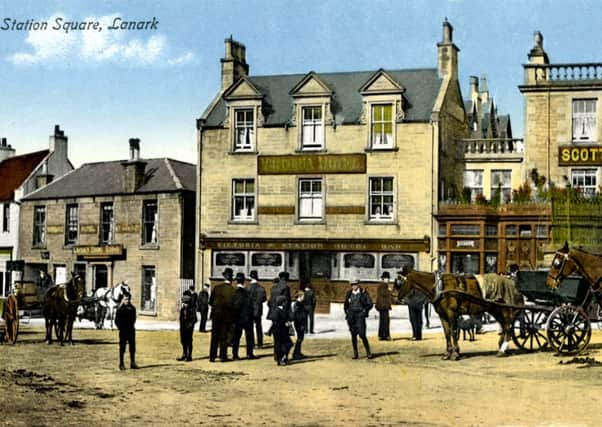Lazy hazy days of holiday trips to Lanark


When the Royal Oak Hotel finally closed its doors a couple of years ago, few realised that this marked the end of a glorious era.
With that closure went the very last hotel rooms in the whole Royal Burgh, something that would have been unthinkable just over 100 years ago when that street alone was home to SEVEN such establishments.
Advertisement
Hide AdAdvertisement
Hide AdIn fact, looking at a postcard from just before the Great War you can see that three of them once stood next door to each other, two of these, The Victoria and Scott’s Station Hotels, later to merge into what eventually became The Royal Oak.
There was even one haven, run by the legendary ‘Pie’ Lawson, in that thoroughfare which catered for the substantial Victorian and Edwardian minority who eschewed the demon drink and kept temptation at bay by booking into his Temperance Hotel.
It’s no accident that all these hotels were grouped in that one street in Lanark and the clue lies in the second word in both these hotels’ names – ‘Station’.
Bannatyne Street is, of course, also home to Lanark’s railway station and it was its building in the mid-Victorian era which really kicked off the Lanark tourist boom.
Advertisement
Hide AdAdvertisement
Hide AdTrue, the Royal Burgh HAD enjoyed previous spells as a fashionable port of call for travellers, especially those eager to see the nearby magnificent Falls of Clyde.
The former Clydesdale Hotel, now a Wetherspoons pub, still bears a plaque stating that Wordsworth and Coleridge once stayed under its roof while ‘doing the tour’ of Scotland’s greatest natural spectacles.
However, back then, at the start of the 19th century, Lanark was very much a resort for the rich and famous like these great writers.
It was only with the later coming of the railway that the town became accessible to the middle and even upper-working class traveller from Glasgow and the West Coast with a few days off their work and a few spare pounds.
Advertisement
Hide AdAdvertisement
Hide AdEven today, going around antique fairs in Scotland and rifling through the boxes of old postcards, you’ll find a surprising number depicting the Lanark of a century ago, many of them with Glasgow, Ayrshire and Renfrewshire addresses on the back and mundane messages along the lines of “having a wonderful time breathing the fresh air of Bonnie Lanark”.
That fresh air alone was a major drawback then; in these pre-smokeless fuel days of the height of the Industrial Revolution, Glasgow lived under a constant pall of what we call smog today.
The pollution-free climes just 30 miles and an hour’s journey down the railway line to Lanark led to the town gaining a plethora of two very different types of accommodation; hotels and several convalescent hospitals, the latter for those recovering from the lung diseases which cursed many urban Victorians.
However, it was pleasure rather than survival that ‘breath of fresh air’ Lanark provided which brought the holidaymakers flocking here.
Advertisement
Hide AdAdvertisement
Hide AdOf course, other businesses in the town flourished; at one time, you could hardly take 10 steps down the town centre without a pub to pop into!
When the Royal Oak is re-born soon as private flats, it will stand as a reminder of these happy, if a bit hazy, days.